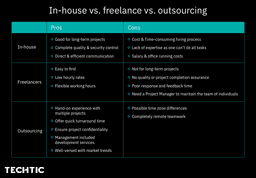How much does an eCommerce website development cost?
Sector: Digital Commerce
Author: Nisarg Mehta
Date Published: 05/16/2022

Contents
eCommerce is an indispensable part of the global retail market that has substantially transformed the industry since the dawn of digitization. As the internet becomes ubiquitous, the number of digital buyers grows, demanding businesses to have eCommerce platforms.
Consequently, developing eCommerce websites is not an option for brands anymore. Besides, if done rightly, eCommerce website development benefits you in many ways. An eCommerce website can help you reach customers beyond geographical boundaries and respond to market trends faster. You can easily attract more buyers via social media marketing and expedite the buying process.
In fact, as per research, e-retail sales surpassed US$4.2 trillion worldwide in 2020, with over two billion people buying products/services online, and are expected to reach about US$7.4 trillion by 2025.
Looking at the prediction, no retailer would want to suffer FOMO, would you? However, there are costs associated with these benefits. To calculate the cost, you may need to consider various aspects you might not know until now. Hence, to help you, we address how much it costs to develop an eCommerce website, covering every nut and bolt.
Now, you have to consider this post to get an idea of the eCommerce website development cost.
Types of eCommerce websites
From market niches to selling approaches, customers, and more aspects, categorize the eCommerce sites. And there is no one fits all solution as a store sells different products/services from another store, be it online or offline. Since the type of your platform plays a role in the development cost, you must decide it before anything. For example
Single brand websites such as Nike
As the name goes, such platforms sell products of only their own brand, making it easy to develop. It doesn’t require many features or integrations. Hence, it is also cost-effective. However, such websites need geographic-specific versions to cater to customers across different nations.
Online retailers such as Walmart, IKEA
The product spectrum is significantly broad in this type of eCommerce platform and may also contain other brands. A lot of product categories and brands require more time to work on the backend side to make the website run smoothly.
Marketplaces such as Amazon, Etsy
This type of eCommerce site is widespread. Such sites allow retailers and sellers to sell their products with control of product prices, customer communication, and more. Seemingly marketplace eCommerce websites are expensive and harder to build as they need complex features backed up with a robust tech stack.
Infrastructure Cost
Infrastructure costs are an essential consideration when building an eCommerce website. The more complex the website, the more infrastructure costs will add up. Let’s see what the infrastructure cost comprises.
Ecommerce platform costs
You need an eCommerce platform to build your online store on. Such software platforms range in cost based on their features, type, and level of their service. Some of the most popular eCommerceplatforms are Magento, BigCommerce, and Shopify.
Domain
Buying a domain name is an integral part of developing your eCommerce platform. It helps build your brand reputation and sets you apart from other small business owners. When choosing a domain name, it’s essential to choose something unique and memorable. You can find your domain for as little as $5 to $15 per year.
Hosting
Once you have decided on a domain name and built your website, you will need to choose a hosting provider to store your website files and run your website. Hosting services make your website accessible to internet users and provide space on their servers to build your website. The cost of hosting ranges from $75 to $10,000 a year.
However, choosing a host that allows building customizable websites from scratch is recommended. Though, such hosting services cost more. But unlike low-cost services, you will get more features, support, and high quality.
SSL certificates
A website’s security is a considerable concern for eCommerce platforms as there will be users’ personal and sensitive data. When you buy an SSL certificate for your eCommerce website, it guarantees security against third-party interference. SSL — Secure Sockets Layer is a digital certificate that enables an encrypted connection between a website and browser using the HTTPS protocol. The cost to acquire an SSL certificate ranges from $6 to $150.
Marketing
Marketing expenses help you reach new customers through the internet who are already searching for products such as yours. There are many channels you can market your eCommerce platform to drive more traffic and sales, such as search engines, social media, email, display advertising, and website optimization.
Third-Party Collaboration
Relying on third-party services like logistics for order delivery and payment gateways for online payment is critical for an eCommerce platform. It involves working with other service providers to offer your customers a better shopping experience. The cost of these services can add up quickly, so it is vital to choose a provider that provides a variety of pricing options.
7 Factors that affect the eCommerce website cost
Several factors affect the cost of setting up an eCommerce website. The size, nature, and number of the product or services your business offers will impact the cost of your eCommerce website.
The average cost to build an eCommerce site containing 100-1000 products can fall from US$5000 to US$55,000. There are a number of factors causing such a variation in the cost that you must know before planning your budget.
Website features
Adding valuable features is a must for an eCommerce website to be quickly accessible to your visitors/customers. Besides general features, you need some advanced functionality, including shopping carts, quick checkout processes, product detail screen, customer identity protection, personalization, etc. However, as the number of features and their complexity rise, the cost grows with it. On average, functionality development for your eCommerce website may cost around US$2000 to US$25000.
Design
The eCommerce website design is one of the most critical aspects of all. Because it is the first thing that potential customers will see when they visit your site. Since it’s the first impression they will have of your business, it must be striking and persuasive. Besides, you need to ensure your eCommerce platform runs smoothly across the web and mobile devices.
A responsive and mobile-friendly design for an eCommerce website may cost US$5000 to US$25000 or more.
API integrations
An eCommerce website requires many API integrations to complete and sometimes extend its functionality. Examples include social media integrations for the quick login process, CRM integration for customer relationships, Google Analytics for analytical reports, etc.
API integrations can cost US$500 to US$5000 based on the complexity of the integration.
Payment processing costs
It’s easy but not recommended to overlook the payment processing cost that can impact your budget indirectly. The payment processing cost depends on the type of payment process, the currency you accept, and the region you offer your eCommerce platform. For example, PayPal charges approximately 2.29% + $0.49 per transaction, while Stripe charges roughly 2.9% + $0.09 per transaction.
Developers and their location
The cost of software development services dramatically varies in different countries. Developers from Asian countries charge less compared to developers from the United States, Australia, or Western Europe. Hence, be mindful of where you hire your developers or development service from. Average hourly rates of developers in different countries:
United States: $100-$149
Western Europe: $55-$99
Australia: $100-$149
Asia Pacific: $25-$50
Maintenance
eCommerce platforms require regular maintenance, including improvements, bug fixing, and adding new functionality to keep your store relevant and updated with the latest trends. The cost to maintain your eCommerce website ranges from $600 to $12000 yearly, depending on the time a developer dedicates.
Development Cost: In-house vs. freelance vs. outsourcing team: Who you can rely on to minimize e-commerce website development cost
When it comes to e-commerce website design and development, you have three different options. You can do it all in-house, outsource the job, or hire a team of independent contractors (freelancers). Which option is best for your business depends largely on your budget, timeline, and expectations. Let us see what pros and cons each approach holds.

So when your peace of mind and the success of your eCommerce website is your priority, you can choose to outsource blindly. Outsourcing isn’t only convenient but also offers a pool of talent in a budget that otherwise could cost you an arm and a leg to recruit and maintain in-house.
Moreover, unlike freelancers, you don’t have to worry about your project deadline or confidentiality as an outsourcing eCommerce website development company ensures the same.
Looking for ways to minimize your eCommerce website development cost?
If you want someone you can depend on to minimize the cost of technology without sacrificing quality; we can be your perfect ally. Techtic solution can bring hands-on experienced eCommerce website developers and designers to create a unique identity for your online store in the market.
We can also assist with eCommerce strategy, business consulting, eCommerce-storefront design, and custom eCommerce development. So, don’t wait to discuss your requirements with us!
Latest Tech Insights!
Join our newsletter for the latest updates, tips, and trends.



